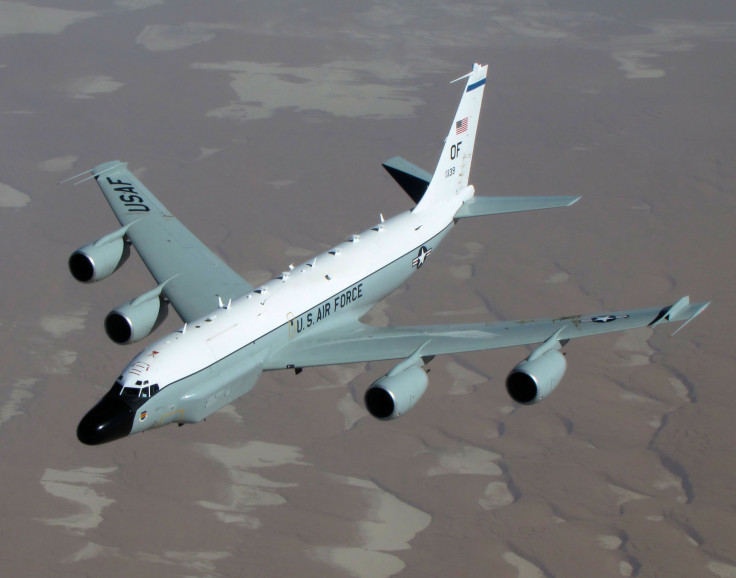US Spy Plane Hugs China's Coast In Fly-By, Likely Mapped Mainland's Radars
KEY POINTS
- It kept a path close to the Chinese territory the entire time
- Analysts believe its targets were radars deep in mainland China
- A similar flight happened last week along China's northern coast
The U.S. Air Force has sent a spy plane along China's southern coastline near the Hainan Island, home to the People's Liberation Army's (PLA) highly-strategic Yulin Naval Base.
According to online flight tracking data, the RC-135U electronic intelligence aircraft made the flight Monday around the Hainan Island and into the Gulf of Tonkin. Though the aircraft was in the international airspace, it kept a path close to the Chinese territory the entire time, according to the data released by the Chinese think tank South China Sea Probing Initiative on its Twitter handle.
Not only does Hainan host the Yulin Naval Base, but it is also the PLA Navy's primary hub in the region and a homeport of all Chinese nuclear submarine bases. According to the think tank, the aggressive spy plane's target "is likely to be radars deep in mainland China instead of Chinese maritime activities."
Same USAF RC-135U #AE01D5 is operating along the coast of Guangdong and Hainan now, June 6. Of the US reconnaissance aircraft, RC-135U is perhaps the most aggressive, and its main target is likely to be radars deep in mainland China instead of Chinese maritime activities. https://t.co/fOFIwe3h2p pic.twitter.com/dVecRSpeKn
— SCS Probing Initiative (@SCS_PI) June 6, 2022
Interestingly, this comes amid the recent reports of Chinese fighters harassing and chaffing foreign jets flying over international waters in the South Chinese Sea region and elsewhere in the Pacific recently. Recently, Australia and Canada had accused PLA aircraft of forcing an Australian plane into a dangerous maneuver.
The plane is one of the two RC-135Us owned by the U.S. Air Force and had undertaken a similar flight on June 3 along China's central and northern coastlines before. The close-in reconnaissance flight happened in the East China Sea and the Yellow Sea and the nearest distance way from China’s baselines was reportedly less than 29 nautical miles. Both of these sorties were conducted from Kadena Air Base on the Japanese island of Okinawa.
USAF RC-135U #AE01D5 conducted close-in reconnaissance on China in the #EastChinaSea and Yellow Sea, Jun 3. The nearest distance way from China’s baselines was less than 29 nautical miles. pic.twitter.com/hsLYuWNmYk
— SCS Probing Initiative (@SCS_PI) June 3, 2022
According to a report by The Drive, the flight allows the RC-135U to gather data on various Chinese assets to the south on Woody Island and in the Paracel Islands chain. China has been actively militarizing and expanding the facilities on Woody Island and in the Paracels to strengthen its hold in the disputed South China Sea.
Such is Beijing's hold in the region that these previously uninhabitable shoals and reefs are now dotted with fortress-like and largely man-made outposts.
The spy plane's flight also highlights the U.S. effort to get the most up-to-date and detailed information regarding Chinese radars and its integrated air defense system.

© Copyright IBTimes 2025. All rights reserved.




















